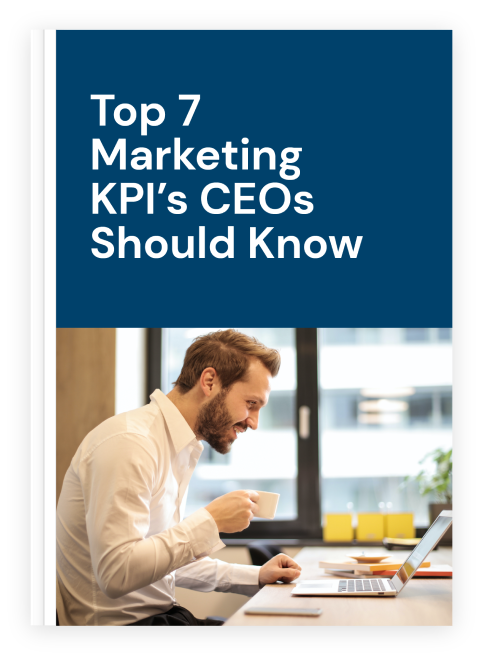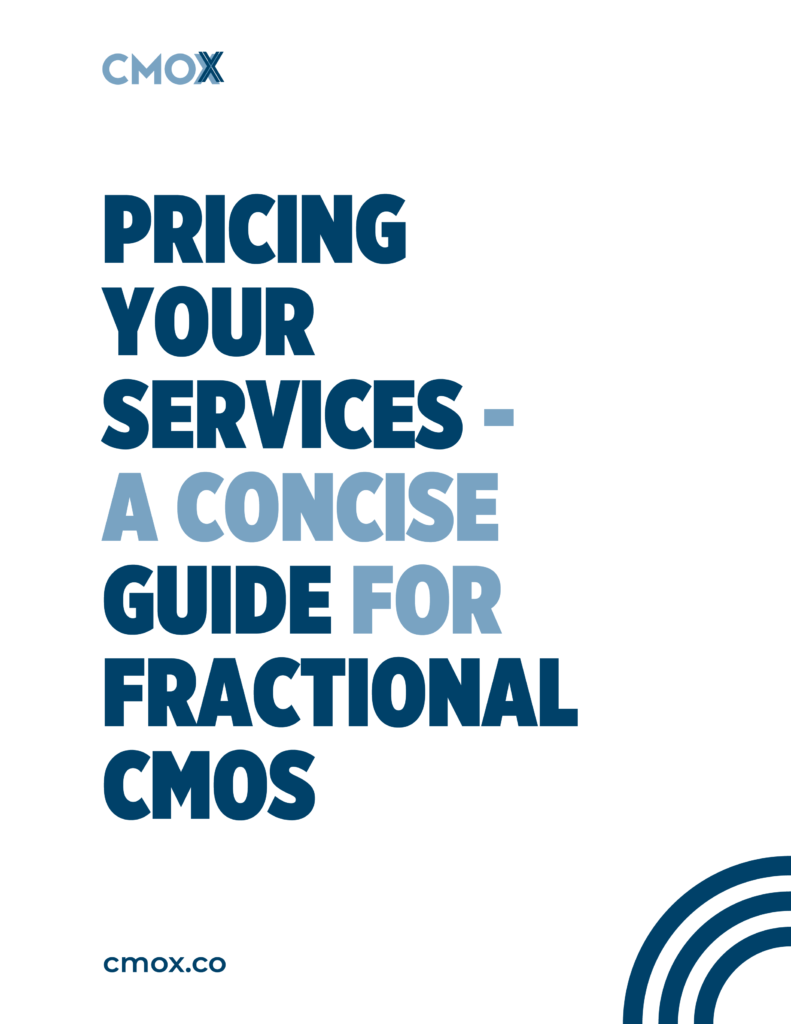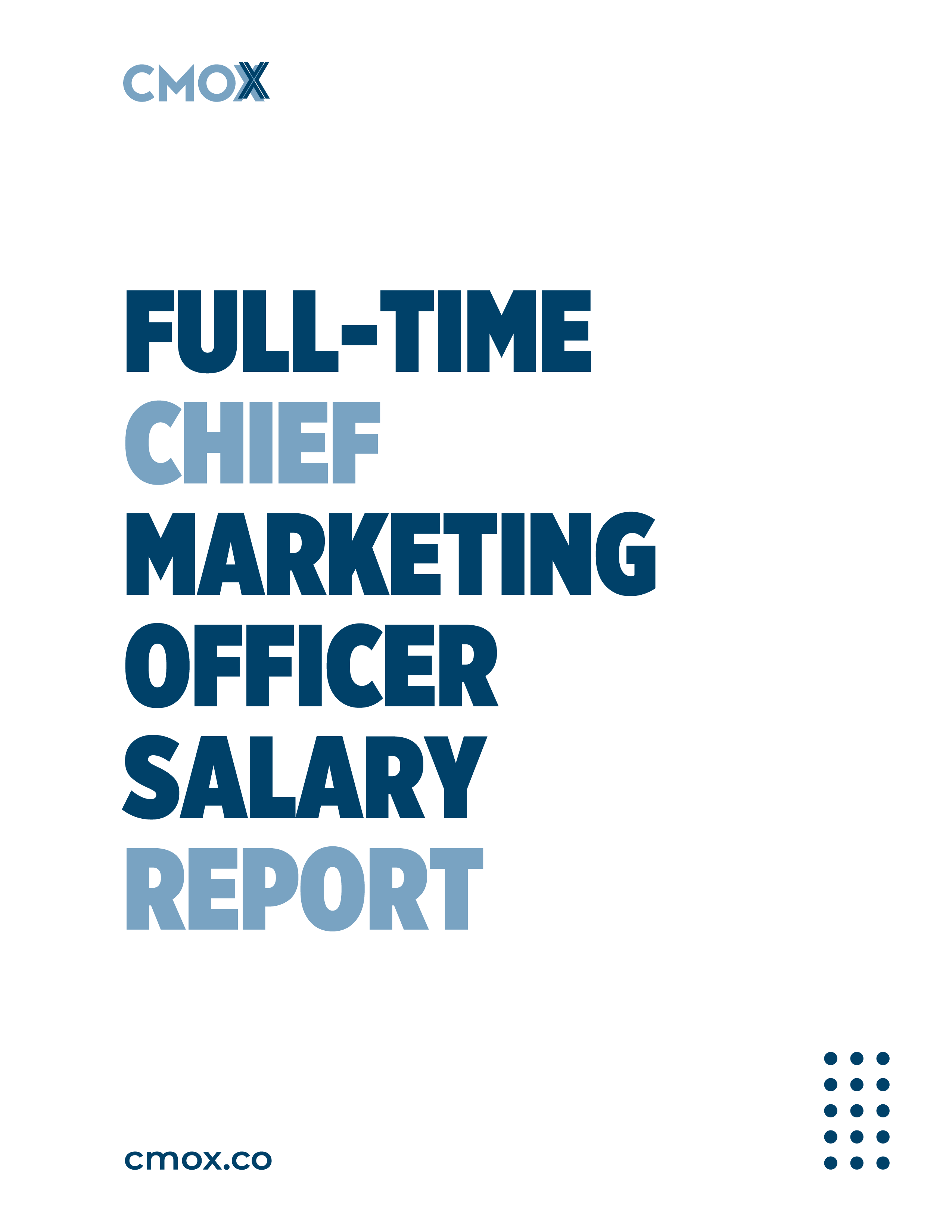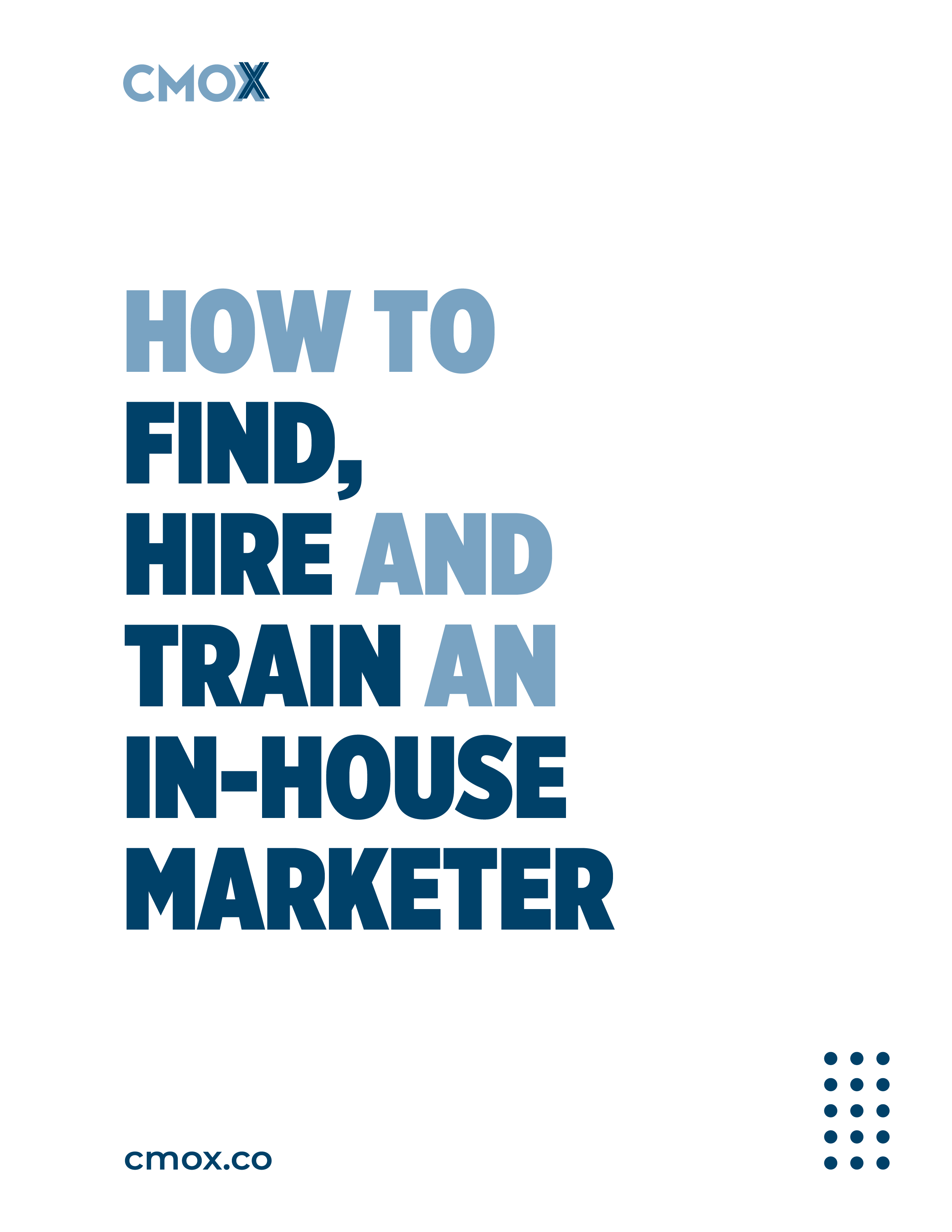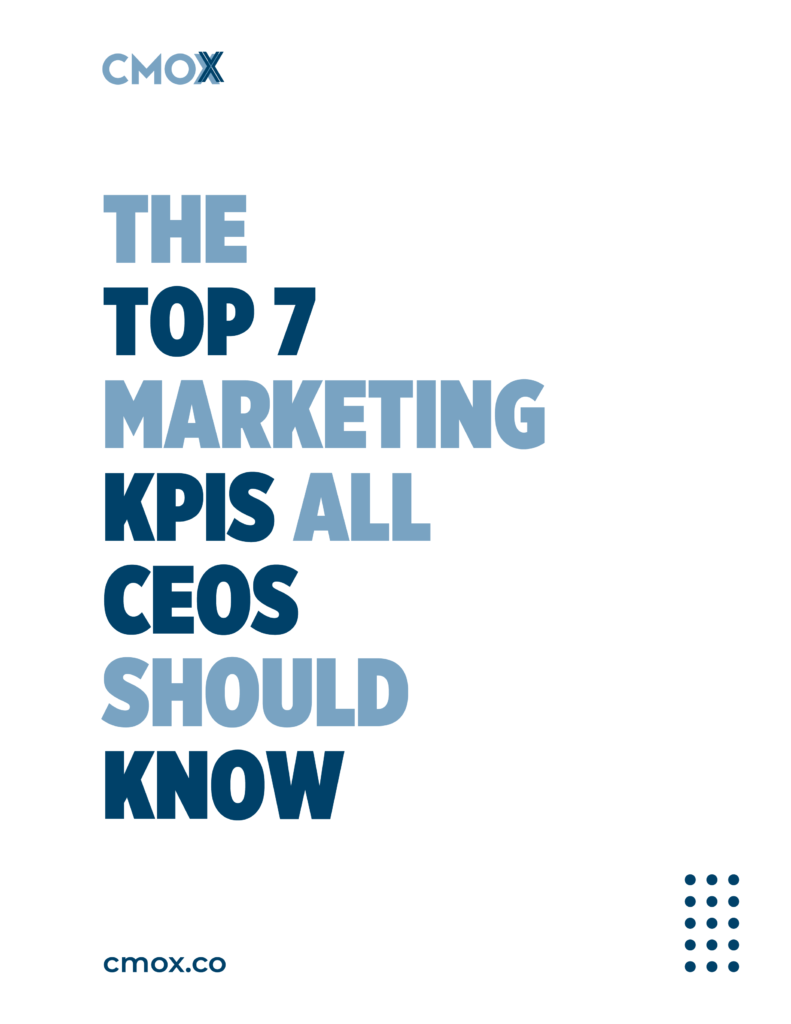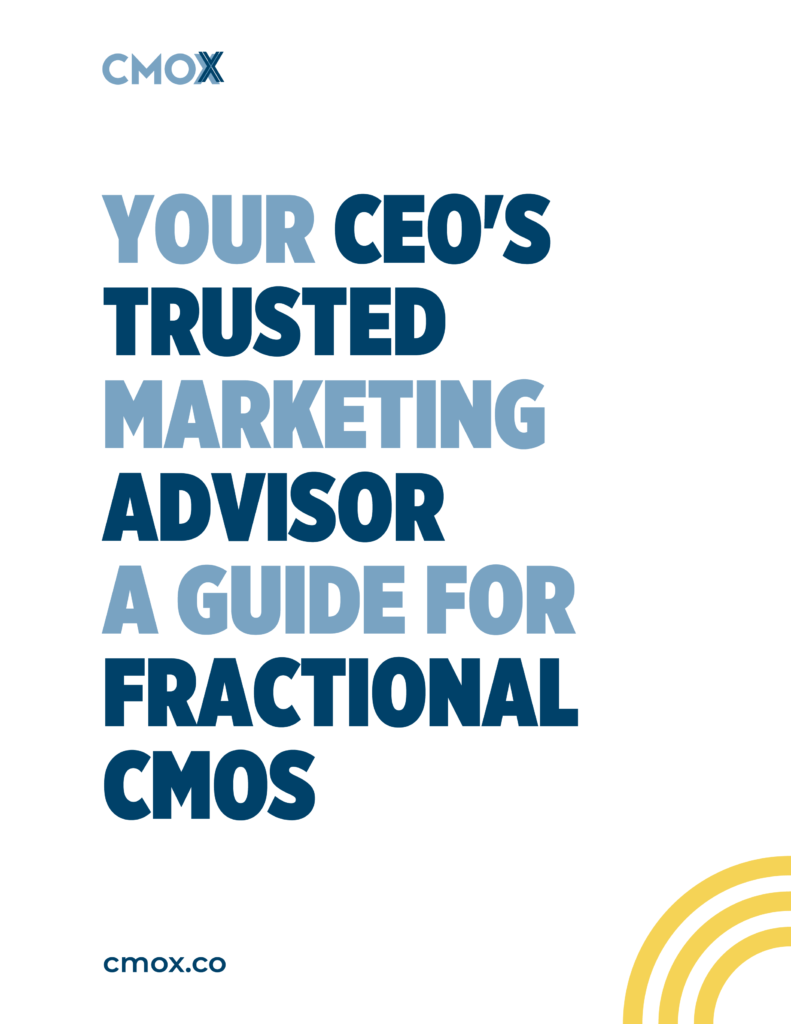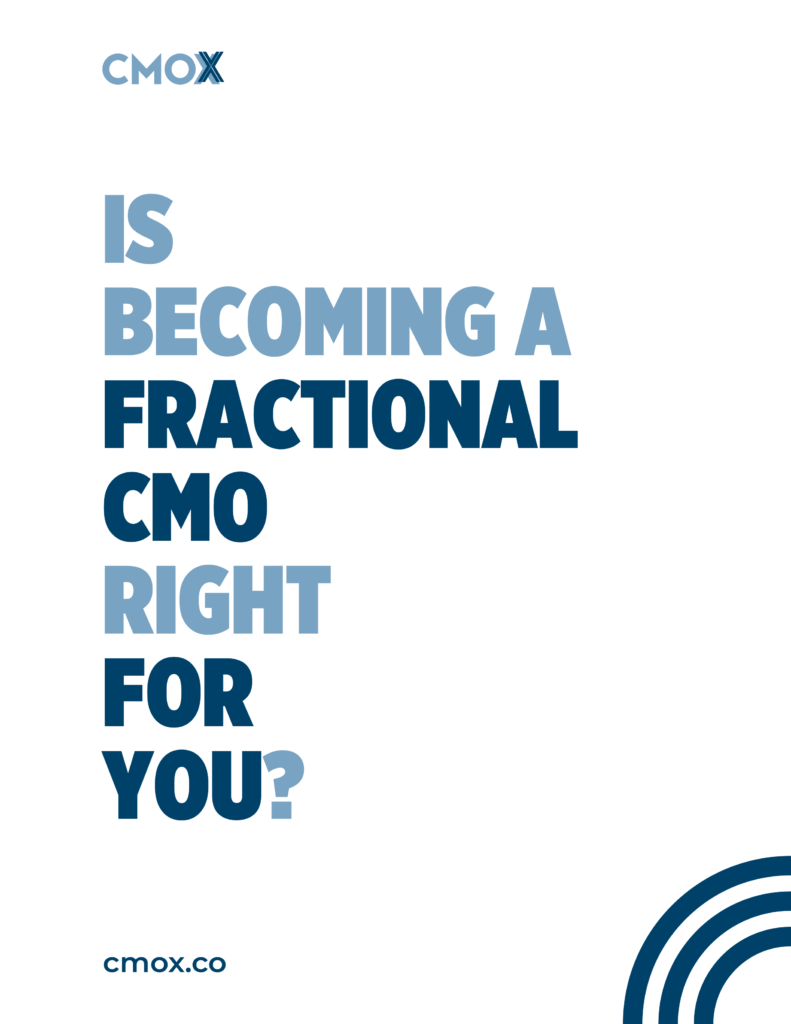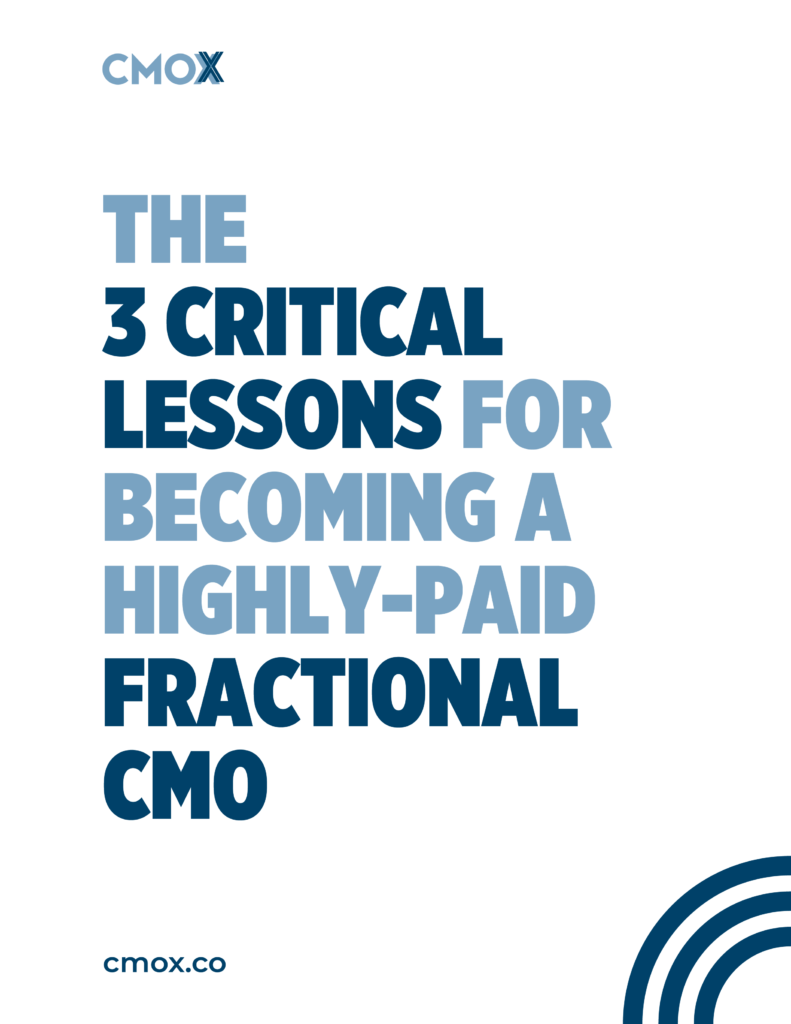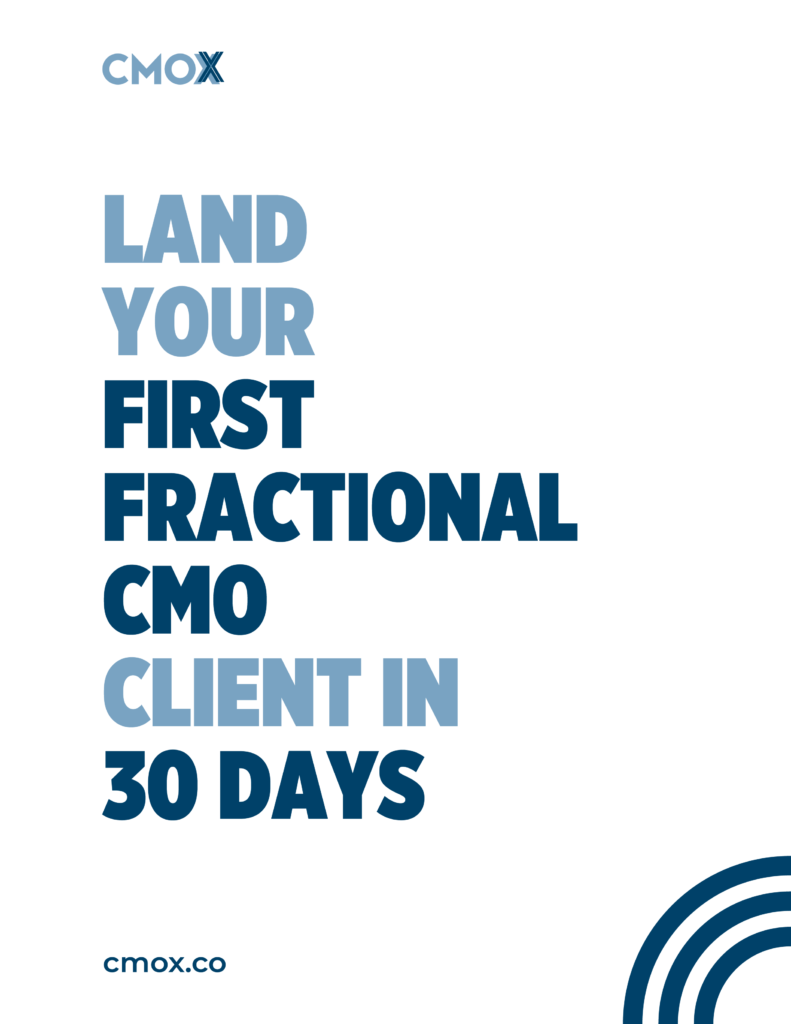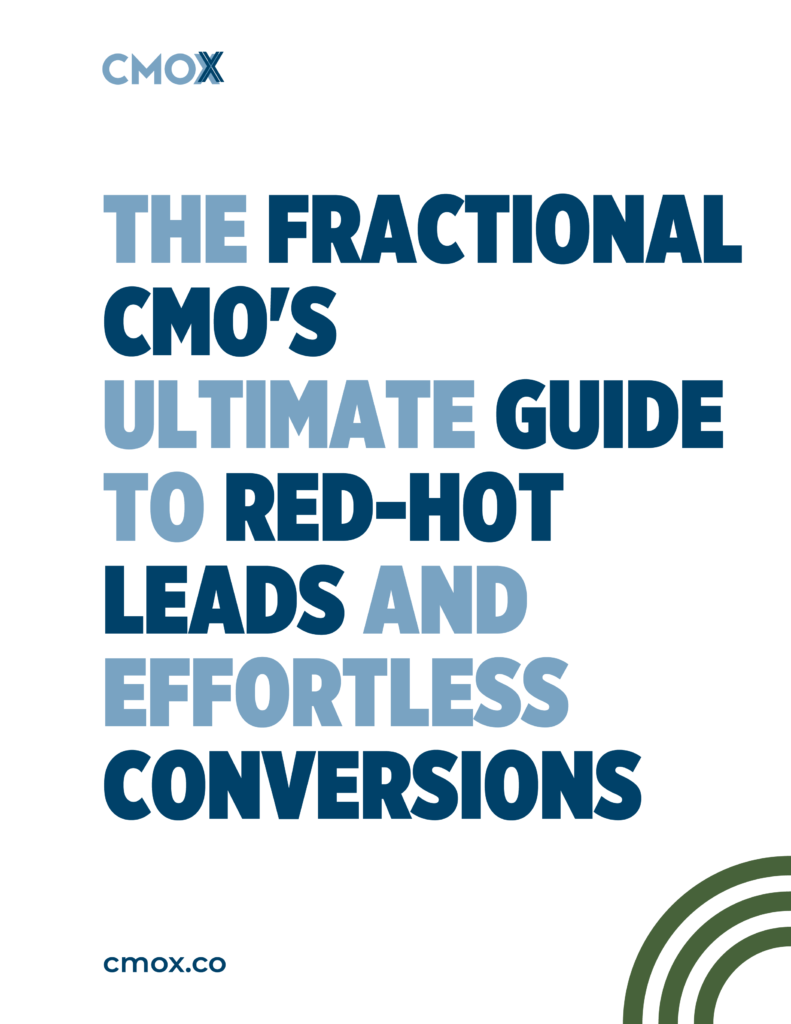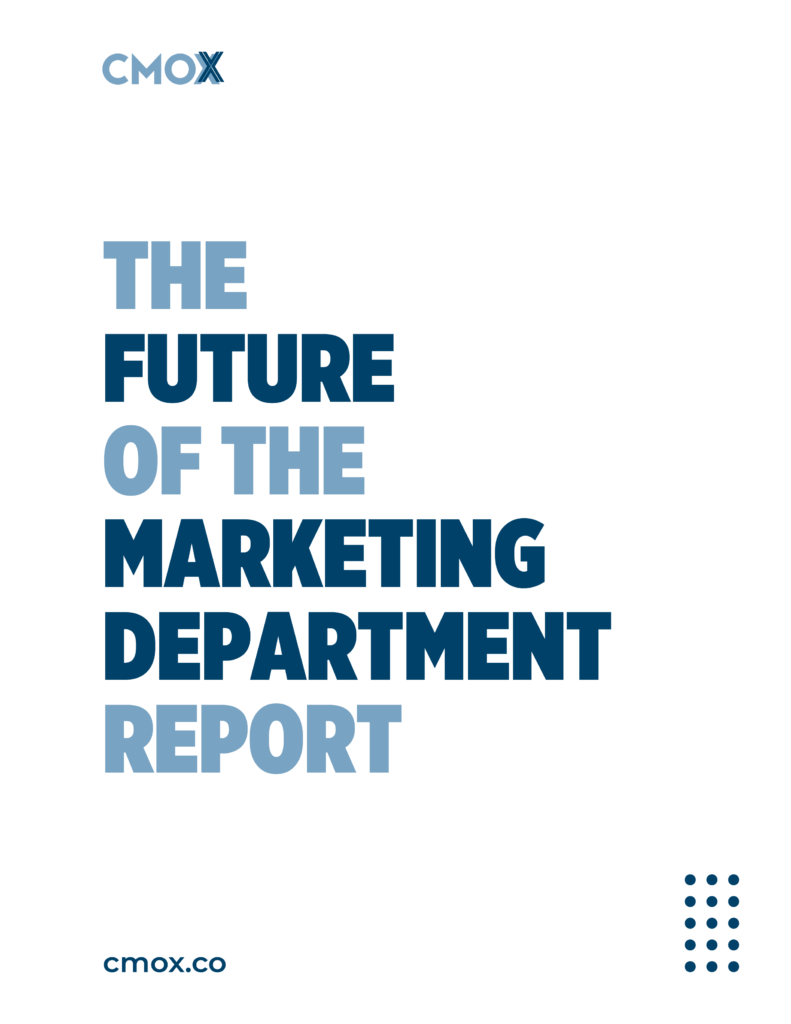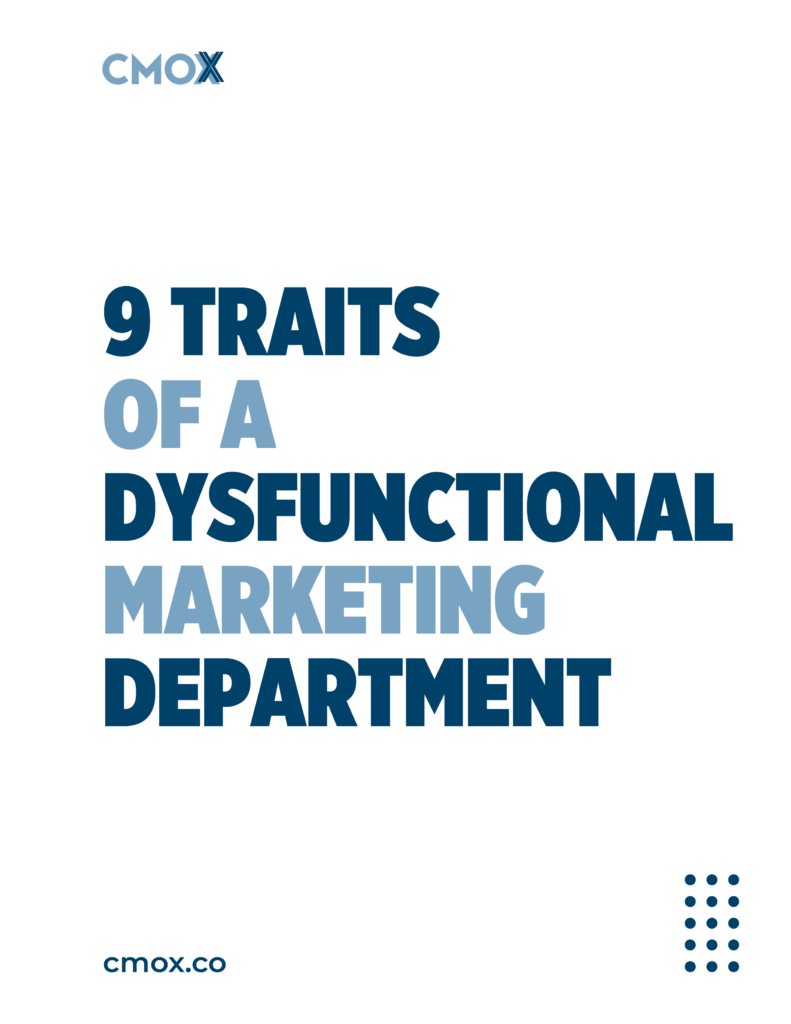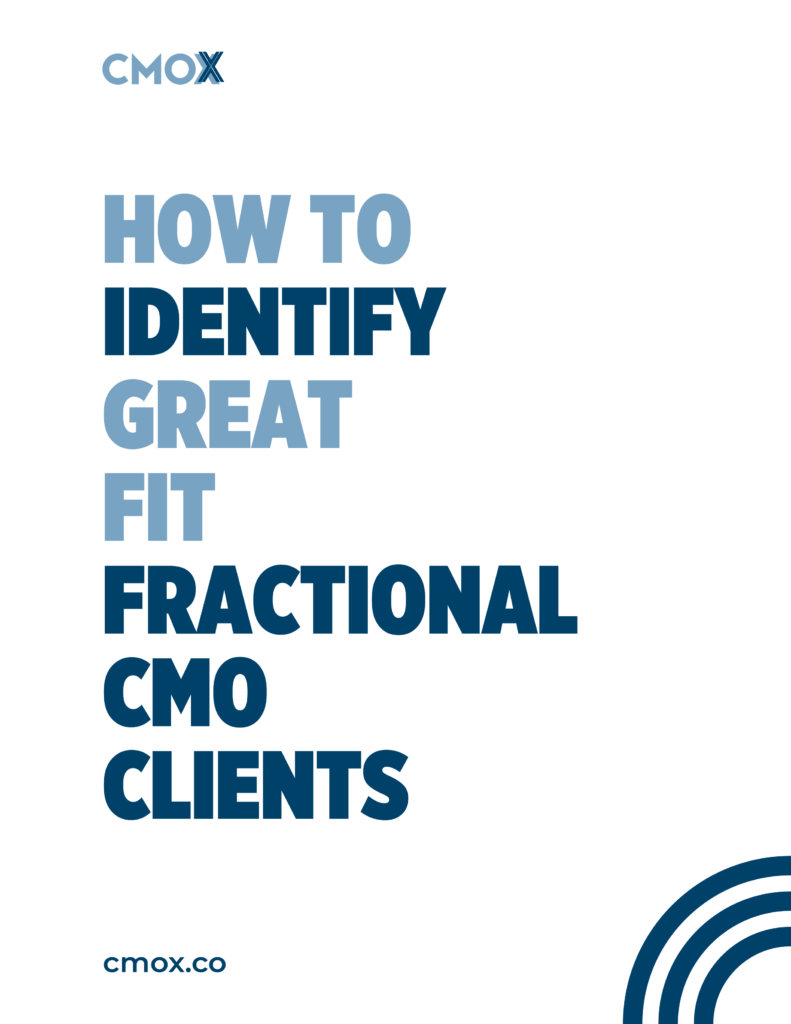Ep #91: Don't Do This Busywork So You Can Be a Successful Fractional CMO

Are you actually running a business as a fractional CMO, or just going through the motions? In this episode of The Fractional CMO Show, Casey Stanton breaks down the difference between being in business and playing business. He calls out the distractions—like obsessing over websites, business cards, and LLC structures—that keep marketers from making real money. Instead, he shares the key to success: solving big problems, talking to check writers, and building deal flow. If you’re ready to stop spinning your wheels and start landing high-value clients, this episode is for you.

Episode highlights:
Are you actually running a business as a fractional CMO, or just going through the motions? In this episode of The Fractional CMO Show, Casey Stanton breaks down the difference between being in business and playing business. He calls out the distractions—like obsessing over websites, business cards, and LLC structures—that keep marketers from making real money. Instead, he shares the key to success: solving big problems, talking to check writers, and building deal flow. If you’re ready to stop spinning your wheels and start landing high-value clients, this episode is for you.
Here’s what we talked about:
- The difference between being in business vs. playing business
- Common distractions: websites, business cards, and unnecessary LLC setups
- Why talking to check writers is the fastest path to success
- How to build real deal flow and attract high-paying clients
- Why dressing the part and fancy branding don’t matter
- The power of community and surrounding yourself with high-level thinkers
Transcript:
00:00:00 Casey: In this episode, I’m going to share the difference between being in business as a fractional CMO and doing business, and playing business. This is the idea of doing the things that look like you’re doing what’s important as a fractional CMO, but you’re actually not doing the important stuff. This is going to cut through maybe some of the blockers that you have, or maybe some of the beliefs that you have around what you have to do first before you can be a fractional CMO, and we get right to the thing that matters, which is driving value. All right, let’s get in.
00:00:30 Casey: Marketers of the world, why do we work hard to solve small problems? Why do we reinvent ourselves and our clients over and over? And why are we giving away marketing strategy for free? With advancements in AI, we’re all seeing the marketing department shrink from the bottom up, and companies need you to serve them as their fractional chief marketing officer. It’s time to solve bigger problems and bring home a bigger paycheck. It’s time to create the lifestyle we deserve and to make a greater impact.
00:01:03 Casey: This is the Fractional CMO Show and I’m Casey Stanton. Join me as we explore this growing industry and learn to solve bigger problems as marketing leaders. The Fractional CMO Show is sponsored by CMOx, the number one company to teach you how to attract, convert, and serve high-paying fractional CMO clients on your terms.
00:01:27 Casey: Hey, welcome back. This is Casey, and I’m excited to share this with you. So, the reason I recorded this episode is because I recently had a conversation with somebody who was playing business. That’s what it was. And I had a hard time kind of sussing that out at the beginning of the conversation. And just over the course of about a 30-minute call, I realized that they just were playing business. They weren’t actually in business. And let me tell you what that distinction is.
00:01:53 Casey: So, I think back to after I graduated college, I couldn’t find a job in 2008, and I went from Michigan State and I moved back into my folks’ place in northern Michigan, and I lived in their basement. And I started mowing lawns and was just kind of lost and trying to figure out what to do. It was the 2008 housing crisis. It was hard to find traditional work. So I called up a guy that I used to work with at the fire department and he hired me to mow lawns. So there I was, sitting on the back of lawns, lawnmowers, all summer long, and I started getting bored, so I started getting tapes and trainings, and I started listening to Tony Robbins, and ultimately, got into Dan Kennedy and marketing stuff, and the rest is history.
00:02:34 Casey: And the reason I bring that up is I remember sitting at my parents’ island in their kitchen and I would get dressed up in a suit and tie. It was like dress the way that you want to feel, you know. You dress to impress. It’s like the way that you look is the way that your tonality comes out. It’s like all those kinds of ideas I was hearing. I was like, “Okay, that’s the thing.” Like, I got to go get a nice new dress, shirt, and a tie, and you know, I got to look good and drink coffee out of a mug, and you know, whatever.
00:03:03 Casey: And I was just playing the game of business, but never once did I do business as that person. I thought I had to have all of these trappings of what business looks like. So, one of them was like getting dressed up, okay? It’s kind of silly to say that, but you don’t have to get dressed up to be a successful fractional CMO. Most people don’t know if I’m wearing pants or not on most days, right? You don’t have to dress the part. What does the part look like? All the people that I talked to are, without fail, outside of the PE folks that I speak with, just about everyone else is in t-shirts or long sleeve shirts or sweatshirts. You know, they’re not wearing business clothes. They’re not looking business formal. So, that’s not necessary to be a fractional CMO.
00:03:51 Casey: What about a website? Is a website necessary to be a fractional CMO? No, it’s not. I can tell you how many hours I spent toiling over my first website. I hired a designer and it was a work trade. And I had to do a bunch of work outside of my unique ability to help them, and it was tough. They delivered, but it was slow. And then, I had to get someone to build it. That cost me a lot of money. And it was like all of this stuff that never generated a result, like building a website. Just so that I could stress out over the way that the menu looked when you scrolled down the page, or the content on the About Me page, or you know, any of that stuff.
00:04:30 Casey: And even worse, I’m a pretty technical person, but still, stuff in WordPress would break for me. There’d be some cross-site scripting attack and I’d lose my website for a while. It was hacked and I’d have to go and see if I had a backup of it. You know, it was like a pain. Playing business, but I wasn’t in business.
00:04:51 Casey: I had business cards. I can’t tell you how many versions of business cards I’ve had. I just kind of keep them in a drawer, and one day, maybe I’ll pull them out and laugh at myself. I have a lot of business cards. It doesn’t matter. Business cards don’t matter. I don’t carry business cards now.
00:05:09 Casey: Before I thought I had to do all of this stuff. I’ll even give you a crazy shortcut, which, you know, this is the one thing your tax accountant will hate me saying, but you know, I stressed out over having like the perfect LLC in the perfect state. Should it be Delaware? Should it be Nevada? Should it be Wyoming? Should I do it in my local state? Is it an LLC or a C-Corp or an S-Corp? I stressed about all that stuff, and I didn’t need to. I didn’t even need the business to get started. I needed the business once I got paid, but I didn’t need the business before I got paid.
00:05:40 Casey: So, here’s a shortcut. Every state in the United States will allow you to make a business pretty much in an hour, in 10 minutes. You just go to the website for it. You just search: create a business, formulate a business in Pennsylvania, Louisiana, whatever, and you’ll go to the state’s website, and they’ll ask you questions, ask you for your social security, you’ll get your EIN later. It’s all good. And then, like…
00:06:06 Casey: So, I did all this work to prepare myself to have a business and I didn’t do the one thing that was really important, which was, it’s a line from Dan Sullivan—he says to ask check writers. I asked my friends, I asked my family, I asked people on the internet. Their opinions didn’t matter, not because I don’t value their opinions, but because they’re not my ideal customer.
00:06:28 Casey: So what would my friends say to me? They’d say, “Oh, I think it’s crazy that you’re going out on your own. Don’t you think that’s risky?” Or others would say, “That looks awesome.” Neither of those opinions were helpful. What was helpful was just talking to a check writer. And I’ve spent so much time trying to get everything perfect, so I look the part instead of just getting in business and solving bigger problems. And that’s a huge difference of what I see the most successful CMOs do versus the least successful.
00:06:56 Casey: The least successful CMOs think that they have to do all of this stuff. The one that kills me is the website. Here’s the five-minute solution for your website. Buy the domain, and then do a 301 redirect to your LinkedIn profile. Boom! Done. No website needed. Okay? All right. That’s a huge problem for people and that’s over with.
00:07:17 Casey: Do you want to update your LinkedIn profile? Yeah, you probably should. Put your business name there. Put a headline up on your LinkedIn profile. But then, beyond that, you don’t need an online presence. You need to have sales conversation with people who have the financial ability to say yes or no to you, or specifically to say yes to you, and they might say no. And then you got to go have those conversations. So it’s like go make offers. I had a previous podcast on this. Go make offers.
00:07:40 Casey: When my business tanked, I put a sign on my monitor that said, “to make offers.” That was the thing. It wasn’t “Go build the website.” It wasn’t “Build out collateral.” It wasn’t “Go talk to other people in the industry to create a bigger network of…” You know, none of that stuff. Go talk to check writers. Who are the people that can help you? That’s where you want to focus.
00:08:03 Casey: So, I went from this playing business, to now being in business and then meaning business. It’s an attunement, and it happened for me very clearly when my business tanked. I went from, “Oh, everything’s great. Everything’s rosie. Everything’s so easy,” to like, “All right, I got to focus. I have limited time. I’ve got this amount of time before these bills are due. What am I doing right now that has the highest chance or propensity to get the result that I want?” And that was my focus. And I just focused hard on those things. I’d wake up and I’d have my list of things to do.
00:08:40 Casey: On good days, you know, on days that I kind of have the energy, I would do that stuff right away. And on bad days, I was just going to drag my feet all day long and do it before I went to bed. The days that I did it early were always better, but I always did it. I always focused enough and got it done. And it was imperfect. I would do my outreach, and sometimes, I would have typos, or sometimes, I would send an email to the wrong person. You know, those things happen. I learned some tricks along the way, like never have the same subject line for the people that you’re doing outreach to. Just put their name in it so that the emails don’t thread. It’s like that kind of stuff. You’ll learn along the way, but it doesn’t matter. I kept trying and I focused on what mattered.
00:09:24 Casey: At the end of the day, my website wasn’t going to make me money. The email and my autoresponder probably wasn’t going to make me money. What was going to make me money is approaching new people who I hadn’t talked to before and offering to solve problems that I can solve. And that was it. That was the simplicity of it.
00:09:42 Casey: So, I want to zoom out and share with you my vision for you and your future as a fractional CMO. It’s just one word. All I want for you to do is just have this one word burned in your brain, and what you’re doing as a fractional CMO. Because yeah, you want to solve bigger problems, delegate everything except leadership, and practice predicting the future. That’s where you want to kind of spend your time. But what do you want it to look like? What do you want your inbox to look like? What do you want your phone to look like? Your text messages, your WhatsApp, your Facebook Messenger, your LinkedIn in-mail. What do you want that to look like?
00:10:15 Casey: The one word for you: deal flow. That’s what you want. You want considerable deal flow just coming through you. You want to have a super high way of deal flow. And you get to say like, “Not for me, not for me, not for me. Oh, I’ll take that one.” That’s where you want to be. You want to be able just to cherry-pick off the conveyor belt of deals, the one that’s a perfect fit for you.
00:10:39 Casey: The CMOs that struggle are the ones who are saying, “Oh, I’ve got this client. I know them from church. They want me to do this marketing, leadership stuff, but also like a lot of branding and implementation, and they can spend $1,200 a month. I really don’t want to lose that opportunity,” which I’m thinking, that’s a baby opportunity. I want you charging five grand or 10 grand a month or more. You got to let go of those small potatoes…if you can. If you can afford it. If you’re at that stage of life. I would rather risk not taking on small clients to wait and talk to better fit clients, and hopefully land one of those, than I would pick up the small potatoes.
00:11:16 Casey: So, you need to be focused on what you want, be clear about what that offer is, how you serve as a fractional CMO, who you serve. And then, you got to be in front of deal flow. How do you get in front of deal flow? Well, you can do it in the short term. You can find deal flow that’s happening. You can talk to some people and be like, “Hey, do you know any deals that are happening like this? Do you know any companies that are looking to grow like this? Do you know anyone who just received a XYZ series funding? Do you know anyone who just did something that makes them a good candidate for my work as a fractional CMO?” You can have those conversations, and that’s fine. That’s labor intensive, though.
00:11:51 Casey: I want you to think through how you can long-term build deal flow so the deals come to you, or come go through you. That’s how we kind of visualize it. There’s all of these people in my life that are doing really cool business stuff, and then there’s me. And I want all of their marketing related ideas to come through me and then pass through me. Like, I’m the conduit of it. I’m the bottleneck, almost. I do it by saying things like this.
00:12:19 Casey: “Yeah, I would just love to be the person that you think of when a deal comes over on your table and you’re considering it and you think maybe marketing could help. Would you pass it my way? I’d love to take a look at it. I’m happy to give you my time and advice on if I think it’s a good deal or not, without cost. I just ask that if I think it’s a good deal that I can throw my hat in the ring.”
00:12:40 Casey: People are like, “Yeah, dude. That’s cool.” So you could go work with private equity groups that have deal flow and you just stand in the way, and a deal comes through them, and they pass it to you and say, “Hey, would you check this one out? What do you think about this?” And you give them a really good write-up and you say, “Yeah, that sounds like a fun one. Let me jump in.”
00:12:55 Casey: Because remember, the work that we do as a fractional CMO is not tactical. It’s not like, “Oh, I’m going to give you all the ideas and now you can implement them.” There’s no way I can give someone all of the ideas as fractional CMO and have them implement them. The problem that they have is not, oftentimes, a lack of ideas, but a structure for their strategy, and then the leadership to get the ideas accomplished. That’s what you’re providing. It’s like everyone has gasoline, but you’re the race car and the driver of the race car. They need that driver. Without the driver, they’re not going anywhere. So, you need to be included in those deals for it to make sense.
00:13:34 Casey: And in doing this, it’s a little protracted. It’s not rapid fast, like you get deals overnight. I mean, ultimately, you will get deals overnight, but they take a while, because these people have to have deal flow and then pass them to you. You have to review them, and maybe you make that offer that you want to take them on. You want to create inertia. You want to create movement in all of this. You want to keep checking in with people. You want to have those lasting conversations so that when deals happen, they’re like, “You’re the right person for it. I’m going to bring it to you first for your opinion.” That’s where you want to be.
00:14:10 Casey: The way that you help those people is that you focus on the things in business that matter the most. So, what is that? I can say, any call I get on with a business owner, that the number one problem they’re probably facing is lead volume or lead cost. That’s probably it. Maybe lead conversion rate. But lead volume, are they getting enough leads? And the cost of leads.
00:14:31 Casey: I recently talked to a company. They had a high-ticket product. Just to say for round numbers, it’s a $15,000 product. Their CAC on that product was $12,000, and then they had to pay out a percentage of all cash collected first to the sales team. Their money left to service that customer was near zero. It’s pretty scary. They’re looking for a CMO, not to come in and say like, “Have you guys tried a book-a-call funnel or a demo funnel,” right? They’re not like, “Have you ever done remarketing?” They don’t need that level. They need the level of, “Alright. Your CAC is out of control. What’s your ROAS? Let me get in there, roll up my sleeves, figure out what’s working, what’s not. What are you guys reporting with? Are you guys getting good attribution? Do you have high-ROAS Triple Whale? Do you guys have wicked reports?” What is the way that we’re able to slice and dice this data to figure out the actual problem that exists?
00:15:27 Casey: If you’re that person and you’re solving that problem, it’s enormous, the value that you provide. That value that you provide far outweighs your cost, and oftentimes, you can win additional deals for the company just by being a better leader, because you’re going to get higher conversion rates or lower cost to acquire a customer, lower CAC, increase the ROAS, increase stick rate, help them come up with strategies to have recurring revenue. Whatever the thing is. And that instantly can cover your entire monthly fee, and you could probably cover your fees in the first week or two of the month with just newfound revenue.
00:16:04 Casey: So, the point of being a CMO, and specifically a CMO that’s short on time, so has to be really dang good at what they do in the least amount of time, is to focus on what matters. What doesn’t matter? Dressing the part. Sure, I’d probably garner a touch more respect if I wore a suit all the time. It’s not where I’m at. It’s not what I’m gonna do, okay? That’s fine. I don’t have to dress the part. I have to act the part. I don’t need a website that says everything and have it be perfect, and story brand, and funny, and cute. No. I need a LinkedIn profile.
00:16:42 Casey: I don’t need business cards. I need to approach people at events, have conversations, and then follow up with them. The way I like to do it at an event is say, “Great! Can you pull out your calendar? Let’s book a call for us to follow up next week. How does Wednesday look at lunchtime?” Boom! We’re booking in our calendars live right there. Who needs a business card? A business card is cool. I’ll call you later. What I like to do is just book the call right now so that we don’t have to talk about what we’re going to talk later. We just get it in the books.
00:17:10 Casey: So, there’s this momentum that you create as a CMO, and then the momentum has to be multiplied when you have less time as a fractional CMO. You just don’t have the time in the day to help the client in the same way that a full-time CMO does. So you have to be really good about focusing only on the stuff that matters. And what you start to find is, in life, you kind of approach the world in that way. You know what actually matters and you do those things.
00:17:38 Casey: So, the big summary here is a lot of people play business. They’re like, “I’m going to try this on. I’m going to dream up this whole agency where I’m doing all of this stuff.” Stop it. Don’t waste your time on it. Maybe you have a big picture that you’re going after, but you don’t have to enroll people in your big vision. That’s for you. What you have to enroll them in is, “I’m a fractional CMO for this industry. I solve these problems. Do you have these problems?” “Yes, let’s chat.” “Cool! Here’s how much I cost.” “Great! You want to sign with me?” “Great! Pay me before I start work, and then we have a three-month or a six-month contract that auto-renews.”
00:18:13 Casey: That’s the way that you build that fractional CMO work, and then you tack on the next client, and the next client, and the next client, all along the way, raising your rates because you’re getting better, you’re getting more effective in less time. That’s it. That’s where you got to be. Focus on the results, not on the things that look like you’re successful.
00:18:32 Casey: I think of Jeff Bezos. Dude’s like one of the richest people on earth. Is he the richest? Elon is right now. Have you ever seen him wear a fancy watch? What about Mark Zuckerberg? Is he wearing a fancy watch? What about Elon Musk? Are those guys wearing fancy watches? No. They have all the money in the world, but they don’t need the trappings of what wealth looks like. True wealth for them is full optionality. It’s freedom. So, you don’t have to have the things that make you look like a fractional CMO. You just have to have the conversations with the people who have the problem. That’s it. Skip past all the “I need to do stuff” and then just approach these people, have conversations, be useful, be helpful, solve big problems, and go win the client.
00:19:19 Casey: So, if I had to start all over again, and I only could pick a couple of tools, what would they be? What would be my MVP, Minimum Viable Products, that I would need as tools as a fractional CMO? Email. A phone. I’d get a domain that I redirect to my LinkedIn. The ability to take payment. And I would just use Google Docs for a proposal. Done. Five things. So, GSuite costs me six bucks a month. My cell phone plan… Pretty simple. That’s how I would do it as a fractional CMO. I would get started like that, and I wouldn’t spend time building out anything unnecessary, and I would spend all of my effort having conversations with qualified prospects, with check writers.
00:20:05 Casey: The one thing that’s missing in that is that you’re alone. When you’re alone and you’re doing this by yourself, it’s tough. I did it, man. It’s tough. You got to deal with all the people in your life that aren’t trying to bring you down, but they try to bring you down. You know what I mean? They’re not saying, “I don’t believe in you,” but they’re saying, “Hey, don’t you want the safety of this?” “Oh my gosh, you’re going to pay for your own healthcare?” That kind of stuff.
00:20:27 Casey: Just as a quick aside, I was reading on the subreddit fatFIRE. If you’re not familiar, check it out on Reddit, reddit.com/r/fatFIRE/. It’s for people who are financially independent and retiring early, but they’re doing so fat, meaning that they have a lot of money. I think the fat minimum is 2 million or 10 million, something like that. Chubby is below that. There’s LeanFIRE, FIRE, ChubbyFIRE, and then FatFIRE. So the fatFIRE folks are the ones that are retiring with the most amount of money.
00:20:58: And this guy posted and he’s like, “Hey, I’m thinking about starting a franchise or joining a franchise system, just so I can get the tax write-off and the health benefits.” And I’m thinking to myself, “My brother, what are your health benefits going to cost you? $1,200 a month? $1,500 a month? $2,000 a month? If you’re fat, if you’ve got all this money, why do you need that?” It doesn’t matter how rich you are. People still feel health benefits are this thing that hold them back. Let it go. You’re going to have to pay your own health benefits if you’re in the US. If you’re not in the US, you’re going to pay for it through higher taxes. That’s just how it is, and there’s nothing wrong with it. It’s just kind of a binary thing.
00:21:36 Casey: So I don’t want you to say… I don’t want you to ask your friends and your family their opinions on what you’re doing, because their opinions don’t matter unless they’re check writers, and they’re probably not, and they’re going to question, “What about your health insurance?” Dude, $1200-$1500 bucks for the family. Done. Easy. I can cover that in my first two, three, four days of every month. I can cover my nut by the 14th day of the month, right? That’s where you want to be. Ask check writers. Those are the only people that matter.
00:22:05 Casey: Check writers are the people that can say yes. It’s not the people that work for the people that can say yes. It’s not talking to someone from your hometown who’s really sweet and wants to see you do well. I don’t want to talk to people who want to see me do well. I want to talk to check writers, and I want to be in a community of people that support me, that get it, that are on the same path, that are doing it, that are ahead of me. I love being the dumbest guy in the room. The first day I go to an event where I’m the dumbest guy in the room, I get a little freaked out, but by the end of the second day, I start feeling great. It’s like, “Man, my brain is just upgrading,” right? “I’m seeing things differently as a result of being in this room.”
00:22:46 Casey: That’s why I started the CMOx Accelerator, so that we can have that. I mean, just today, we’ve got a private WhatsApp group for our boardroom members, our most successful members. It’s just nuts. A member was just like, “Oh yeah, I just closed another $10,000 a month client, kind of like on accident.” Being around that changes your perception of how things work. A lot of people are like “I have to work my way up from a $2,000 a month client to a $3,000, to a $3,500, to a $4,000, and maybe in a couple of years, I can get to $5,000.”
00:23:17 Casey: And some other people come into the accelerator and they’re just like, “You know what? I’m going $10,000 for my first, but I really want to get to $ 15,000 in the next three months.” And they do it. And it’s a sense of pressure that they put on themselves, hunger, eagerness, focus. So just being in that community, having people around that support you, incredibly useful.
00:22:39 Casey: If you want to hear more about the CMOx Accelerator, book a call. CMOx.com/call. That’s it. CMOx.com/call. Just book a call with my team and we’ll see if we can help you. If we think you’ve got what it takes to be a successful fractional CMO.
00:23:54 Casey: I hope this was helpful for you and I hope you just kind of gave yourself permission to not do a bunch of stuff. You’re thinking like, “Yeah, it would be nice to do it.” Sure, it’s nice to have a nice website, but you know what else is nice? Making a lot of money. And what would you rather do? Make a lot of money and then pay for someone to build a website for you? Or work your butt off, learn how to build the website, kind of go through the whole cobbler has no shoes thing of creating your own marketing all by yourself and then hopefully winning a client? I would rather do the former. I’d rather just get the client, get the money, and then hire a great team to build the website out for you. That’s where you want to be.
00:24:32 Casey: All right. I would love to see you on a call at some point, so book a call with my team. CMOx.com/call. Okay? Cool. See ya! Bye.
00:24:42 Casey: Thank you for sticking around for the full episode. As you know, learners are earners, but you’ve got to take action on what you heard today. For more information and show notes, visit FractionalCMOShow.com. If you’d like me to answer your questions on an upcoming episode, you can share your question at FractionalCMOShow.com. And last, please hit the like and subscribe button so that I know that this content is helpful to you. All right, go get ‘em.
Join Our Community
We are excited to announce the Fractional CMO Community Facebook Group. This aims to be a place where Fractional CMOs or marketers considering becoming a Fractional CMO can connect and share ideas.
Locations CMOx® serves
- New York
- Philadelphia
- Los Angeles
- San Francisco
- Chicago
- Houston
- Dallas
- Austin
- Miami
- Atlanta
- Denver
- Boston
- San Diego
- Seattle
- Portland
- Minneapolis
- Milwaukee
- Detroit
- Phoenix
- Washington D.C.
- St. Louis
- Toronto
